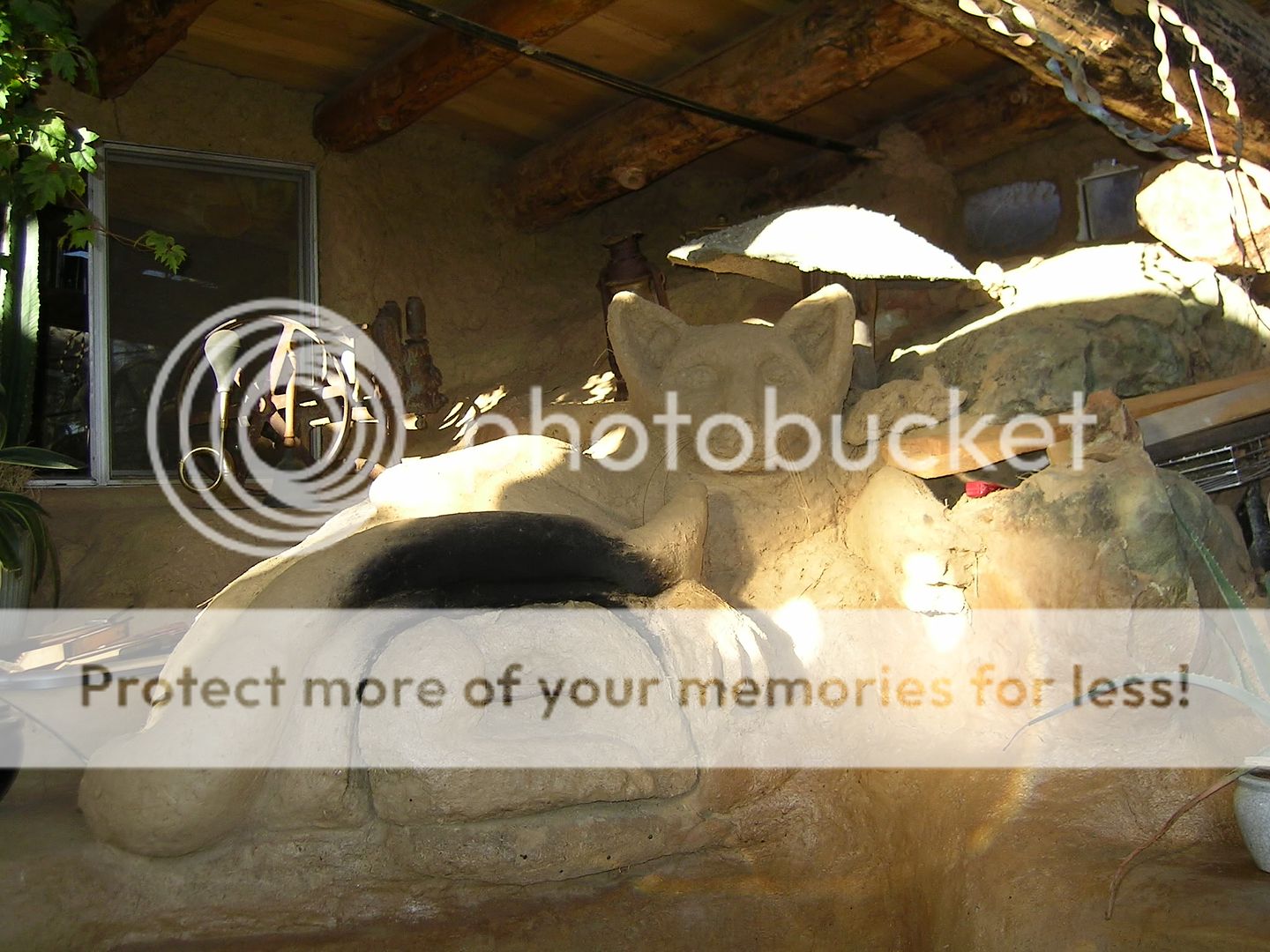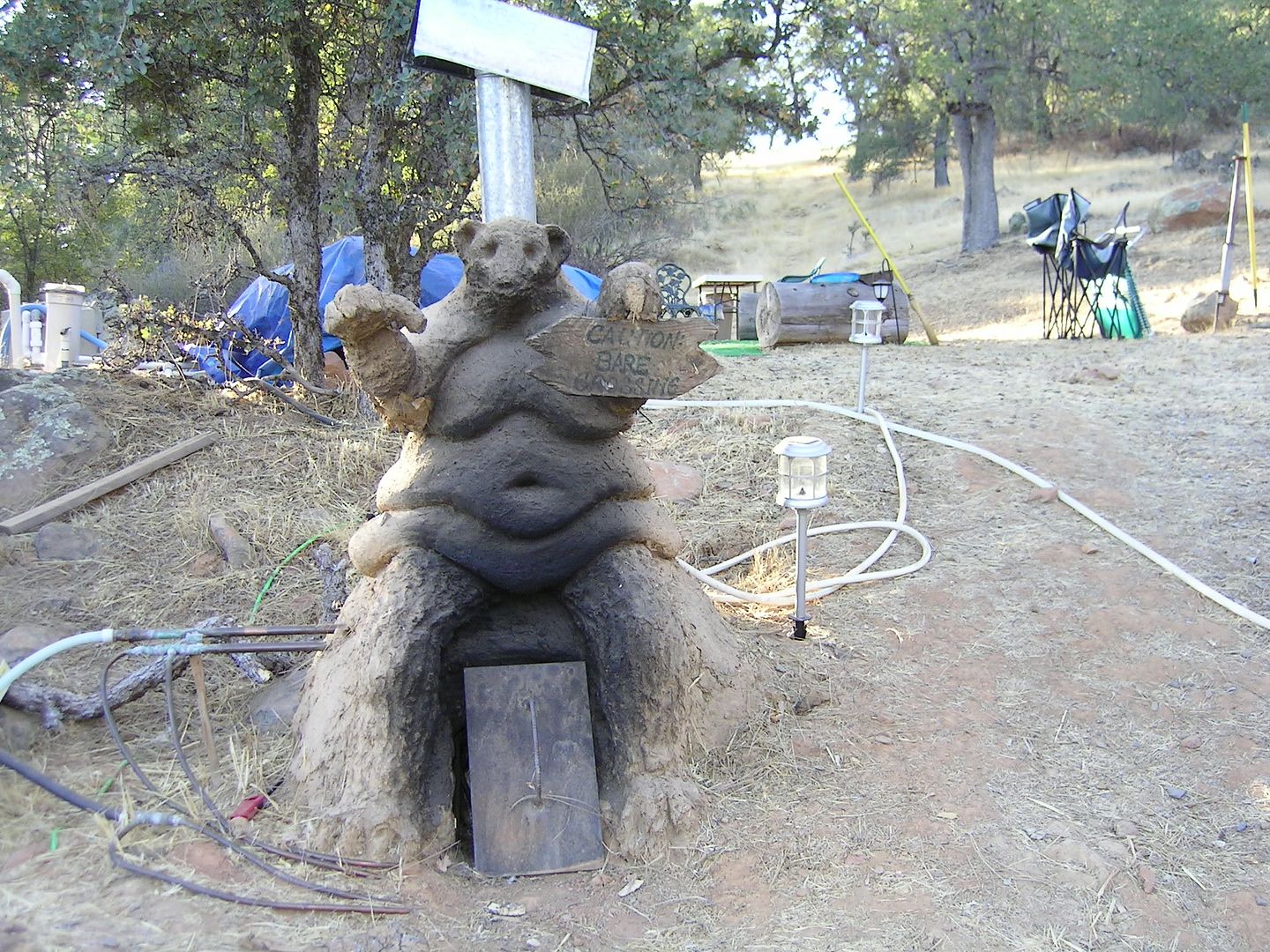
 1
1




Maybe it is cob when applied freehand and adobe when baked as bricks in the sun first..... Or cob is sand clay and only straw... not just any fibrous material... ?Adobe is a natural building material made from sand, clay, and water, with some kind of fibrous or organic material (sticks, straw, dung), which is shaped into bricks using frames and dried in the sun.
 2
2




- Glenn -








 Africa?
Africa? [/img]
[/img]- Glenn -





- Glenn -





That is obviously what has happened….. stratified. I was rather thrilled to discover it. It really stinks though. Probably even be good to add in tiny bits to my garden beds. I am keen to see what this new treasure will produce for me. I just have to wait for the river to subside now…. Rainy season and it is in flood…. Real fun finding ut what has survived each flooding. It can rise 10 meters overnight. Took and enormous tree once… well toppled it and it took me SUCH a long time to get it hacked up to move it. I am in South Africa. Live along the Crocodile River that runs into Hartbeespoort Dam.Yes, Chelle - I think it would work fine. It is common for the sand and clay to stratify separately and they should make cob just fine I think. At the very least your material bears experimenting with. Bushveld grasses, it sounds like you are not from around here. Africa?
I could use the top stuff in the garden then. I will make some bricks and see what mix works best.The river sand and gravel will work fine. The clay will have to be experimented with. The organic clays near the surface are not as good. Learn all you can about their properties through experimentation. I call it "becoming intimate with your natural resources."
No wonder all this interest. The uses are huge! A second story.. wow. So it must be dried grass and not green grass. OK. I will harvest in autumn… the river will go quiet then. So busy making Food Forest at the moment anyway.Grass after it drops it's seed generally always makes straw that will reinforce cob whether it be fine grass straw or coarse as /in Rice straw. Take one piece of grass - pull on it try to break it. 5 lbs 10 lbs 50 lbs of pull? Now multiply that times hundreds of pieces of straw in your cob and you will see where it gets it's strength. Some people have used vines and other things. Native Americans used sticks and twigs embedded in mud to support second story floors.
Just cover with plastic? Or plastic under a final coat of the stuff?Key to making this work reliably is keeping water off of the top of it.
For the rabbits it would only be an outdoor shelter from the sun… I think it would be very cool inside….. they will be locked up at night behind rock and cement. Not safe to leave them out without this I think.I would say you could make a safe small animal dome from cob alone if your clay sand mix works out. It doesn't melt in the rain but it needs a roof over it for long term safety. It will likely be safer than an adobe dome. I am studying a book by Hassan Fathy that tells a safe way to make mud brick domes. It is called Architecture for the poor.
Not very good at keeping it updated… just too much to do. New Year’s resolution…. Ho hum.Seems you had a web link .. guess I will have to check it out to see what you are up to.
Such a neat idea! Artistic. Really like it.Here is my clay oven - a cob dome similar to what you are talking about built by an amateur - (me) in the early days of the underground cabin.
 And the bear is too much! LOL. A hot tub heater.... you are really into things. So super.
And the bear is too much! LOL. A hot tub heater.... you are really into things. So super. 



- Glenn -





- Glenn -




I'll let you know. It will probably be a couple of weeks before I get to it though with the water so high.The Troglodyte wrote:
Chelle, sounds like an extremely interesting place to live.
If the clay stinks pretty bad it is likely organic - again - I would at least experiment with it.
That is interesting. Never heard of that before. Sounds perfect. I have some soft rock too... in between very hard rock..... but is limestone I think.Some clays such as my mineral clay are not recognizable as clay until broken up and mixed with water. They look like soft rock and are very hard to dig. They are claystone when dry and are even considered bedrock around here in the gold country. When broken up and mixed with water they become excellent building clay that is not overly expansive and goes back to being very hard when dry.
I want to get a cement mixer... you think that would be good to use? .... or need to be pushing down on it? Maybe start with the mixer and finish with feet...The clay, sand and straw needs to be well mixed - I use machines - Bobcat tires mostly squishing it. Most use their feet and do it on a tarp to facilitate rolling it over while squishing it..




Glenn, this is so SUPERB! It makes me really hope I can get some use out of mine too... Nice looking grandkids.The Troglodyte wrote:
For more ideas, I found an old pix of our cob conversation pit with the grand kids in it. All benches floor etc in this area are cob.
The cat oven is to the left just above the back of this bench.




- Glenn -




Need more info?
Ernie and Erica
Wood burning stoves, Rocket Mass Heaters, DIY,
Stove plans, Boat plans, General permiculture information, Arts and crafts, Fire science, Find it at www.ernieanderica.info








- Glenn -








Ernie wrote:
I have issues with putting portland cement in earthen materials. the cement uses a totally diffrent way of moisture management then the cob and in my experiance weakens it over time. but it might work better in places that are dryer then oregon. i can comment on earth cement floors and say if you want cement look up lime cement and roman cement neither use the portland mix.
both are burnt rocks but they handle water diffrently over time.
- Glenn -




fardarrigger wrote:
And the straw doesn't stick out at all? Amazing.
- Glenn -













Need more info?
Ernie and Erica
Wood burning stoves, Rocket Mass Heaters, DIY,
Stove plans, Boat plans, General permiculture information, Arts and crafts, Fire science, Find it at www.ernieanderica.info




- Glenn -




Some of the best mineral clay for building with may be high and dry and hard as a rock.
 Still I'll add old (gold specifically do you think?) mining sites to the mental inventory I've started as places to scout for natural clay deposits.
Still I'll add old (gold specifically do you think?) mining sites to the mental inventory I've started as places to scout for natural clay deposits. 




- Glenn -
 1
1




- Glenn -
 1
1




Glenn Kangiser wrote:If using just the natural resources on your land and you had clay without enough sand content ie: 30% clay 70% sand is ideal for most types of earth building, then it may be better to make your soil into adobe bricks. Without enough sand and aggregates, shrinkage will be a lot greater, therefore the bricks may work better.
Straw is your rebar and holds things together and if you were short on sand and aggregate, more straw could help in making the cob work without as much shrinkage as well as better reinforcement.
Cob is a monolithic structure usually with rounded walls and reinforced with straw, so it is immensely stronger than adobe brick walls and done properly will resist even large earthquakes.
In India they have developed methods of making mud bricks with interlocking sides and laid diagonally to resist earthquakes quite well also. They have also developed a method of putting a waterproof coating on the sides of the brick to prevent water damage... concrete and or rock chips etc on the exposed edge.








Invasive plants are Earth's way of insisting we notice her medicines. Stephen Herrod Buhner
Everyone learns what works by learning what doesn't work. Stephen Herrod Buhner

|
Danger, 10,000 volts, very electric .... tiny ad:
The new permaculture playing cards kickstarter is now live!
https://www.kickstarter.com/projects/paulwheaton/garden-cards
|





